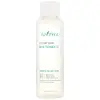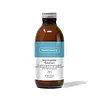What's inside
What's inside
 Key Ingredients
Key Ingredients

 Benefits
Benefits

 Concerns
Concerns

 Ingredients Side-by-side
Ingredients Side-by-side

Water
Skin ConditioningGlycerin
HumectantButylene Glycol
HumectantBetaine Salicylate
AntimicrobialHizikia Fusiforme Extract
Skin ConditioningCodium Fragile Extract
Skin ConditioningEcklonia Cava Extract
Skin ConditioningGelidium Cartilagineum Extract
Skin ProtectingSalix Alba Bark Extract
AstringentCentella Asiatica Extract
CleansingPortulaca Oleracea Extract
Skin ConditioningSodium Hyaluronate
HumectantSoy Isoflavones
Skin ConditioningChamomilla Recutita Flower Extract
MaskingGlycyrrhiza Glabra Root Extract
BleachingAloe Barbadensis Leaf Juice Powder
Skin ConditioningAllantoin
Skin ConditioningDipotassium Glycyrrhizate
HumectantPanthenol
Skin ConditioningSodium Hydroxide
BufferingXanthan Gum
EmulsifyingWater, Glycerin, Butylene Glycol, Betaine Salicylate, Hizikia Fusiforme Extract, Codium Fragile Extract, Ecklonia Cava Extract, Gelidium Cartilagineum Extract, Salix Alba Bark Extract, Centella Asiatica Extract, Portulaca Oleracea Extract, Sodium Hyaluronate, Soy Isoflavones, Chamomilla Recutita Flower Extract, Glycyrrhiza Glabra Root Extract, Aloe Barbadensis Leaf Juice Powder, Allantoin, Dipotassium Glycyrrhizate, Panthenol, Sodium Hydroxide, Xanthan Gum
Water
Skin ConditioningGlycolic Acid
BufferingDimethyl Isosorbide
SolventPropanediol
SolventBetaine
HumectantGlycerin
HumectantSodium Glycolate
BufferingPanthenol
Skin ConditioningSalicylic Acid
MaskingLactic Acid
BufferingChamomilla Recutita Flower Extract
MaskingAloe Barbadensis Leaf Juice
Skin ConditioningCamellia Sinensis Leaf Extract
AntimicrobialCitric Acid
BufferingPotassium Sorbate
Preservative
 Reviews
Reviews

Ingredients Explained
These ingredients are found in both products.
Ingredients higher up in an ingredient list are typically present in a larger amount.
Chamomilla Recutita Flower Extract comes from the Chamomile flower.
Chamomile is rich in antioxidants and has anti-inflammatory properties. Several compounds found in chamomile help with soothing, such as bisbolol.
Antioxidant components in chamomile make it an effective ingredient to help slow the signs of aging. Antioxidants help fight free-radical molecules, or molecules that may damage your skin.
Essential oils from chamomile have been found to improve wound healing due to its antimicrobial properties.
Ancient Greeks and Egyptians used Chamomile to treat skin redness and dryness. Chamomile has also been used to help treat stomach issues.
Learn more about Chamomilla Recutita Flower ExtractGlycerin is already naturally found in your skin. It helps moisturize and protect your skin.
A study from 2016 found glycerin to be more effective as a humectant than AHAs and hyaluronic acid.
As a humectant, it helps the skin stay hydrated by pulling moisture to your skin. The low molecular weight of glycerin allows it to pull moisture into the deeper layers of your skin.
Hydrated skin improves your skin barrier; Your skin barrier helps protect against irritants and bacteria.
Glycerin has also been found to have antimicrobial and antiviral properties. Due to these properties, glycerin is often used in wound and burn treatments.
In cosmetics, glycerin is usually derived from plants such as soybean or palm. However, it can also be sourced from animals, such as tallow or animal fat.
This ingredient is organic, colorless, odorless, and non-toxic.
Glycerin is the name for this ingredient in American English. British English uses Glycerol/Glycerine.
Learn more about GlycerinPanthenol is a common ingredient that helps hydrate and soothe the skin. It is found naturally in our skin and hair.
There are two forms of panthenol: D and L.
D-panthenol is also known as dexpanthenol. Most cosmetics use dexpanthenol or a mixture of D and L-panthenol.
Panthenol is famous due to its ability to go deeper into the skin's layers. Using this ingredient has numerous pros (and no cons):
Like hyaluronic acid, panthenol is a humectant. Humectants are able to bind and hold large amounts of water to keep skin hydrated.
This ingredient works well for wound healing. It works by increasing tissue in the wound and helps close open wounds.
Once oxidized, panthenol converts to pantothenic acid. Panthothenic acid is found in all living cells.
This ingredient is also referred to as pro-vitamin B5.
Learn more about PanthenolWater. It's the most common cosmetic ingredient of all. You'll usually see it at the top of ingredient lists, meaning that it makes up the largest part of the product.
So why is it so popular? Water most often acts as a solvent - this means that it helps dissolve other ingredients into the formulation.
You'll also recognize water as that liquid we all need to stay alive. If you see this, drink a glass of water. Stay hydrated!
Learn more about Water